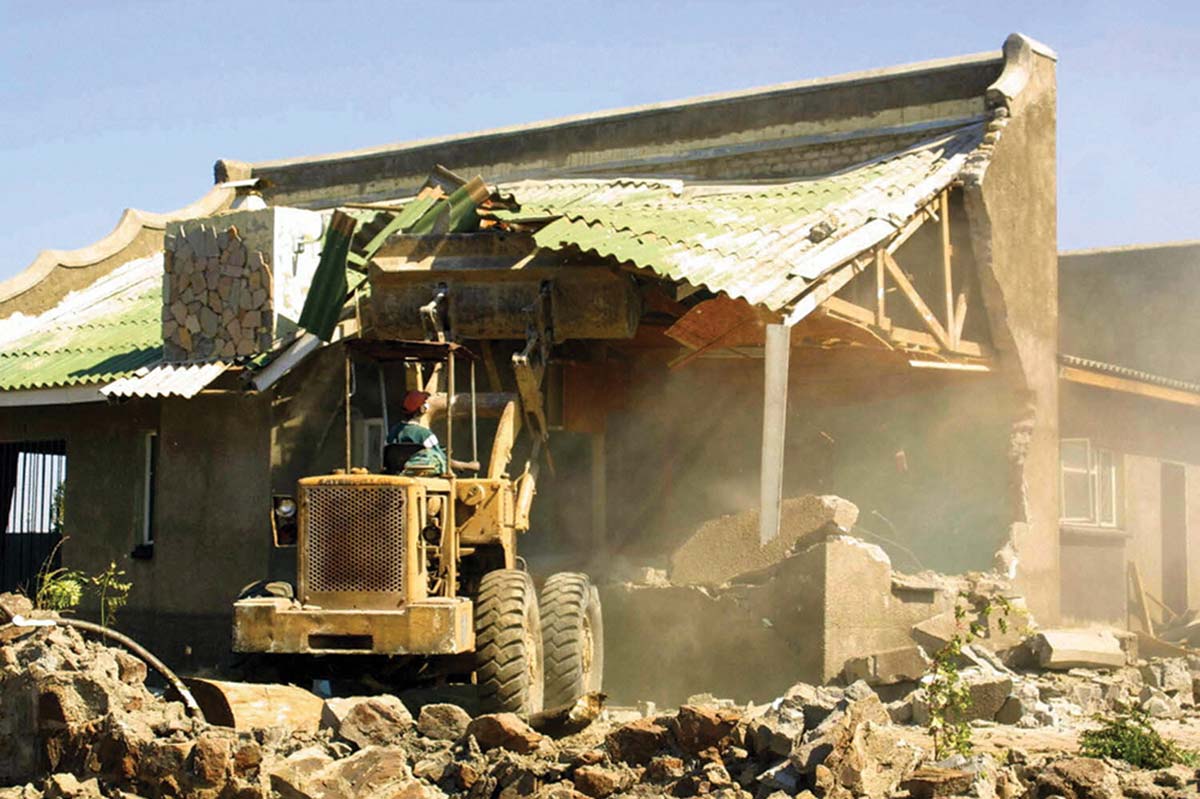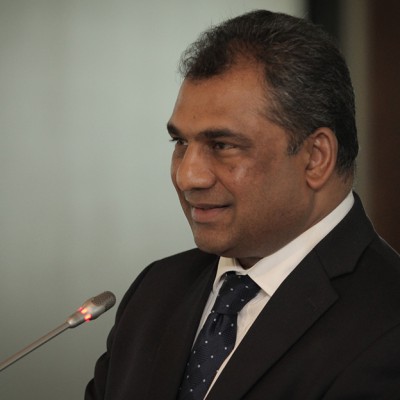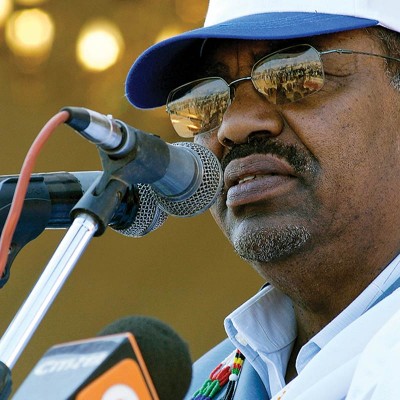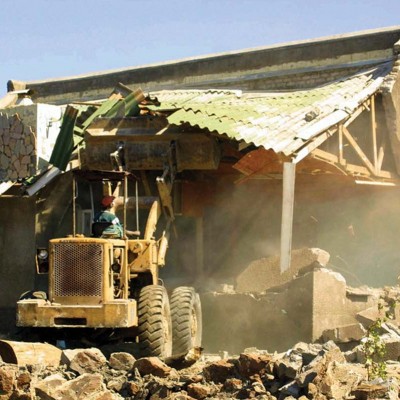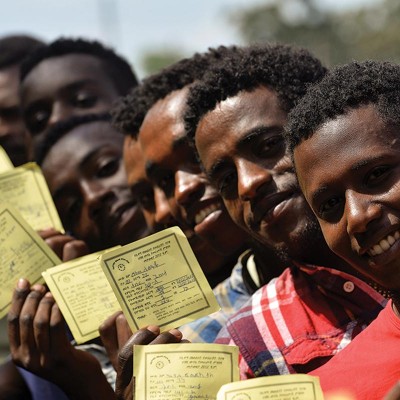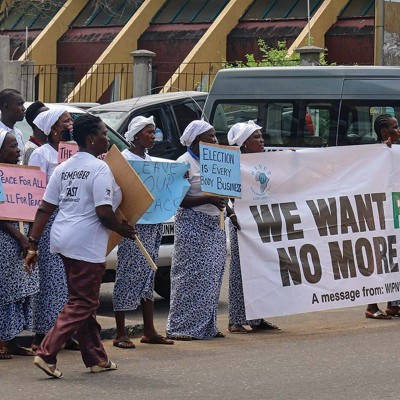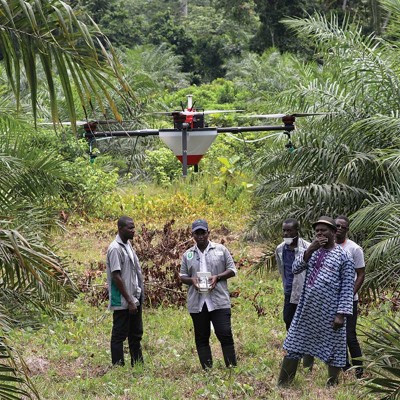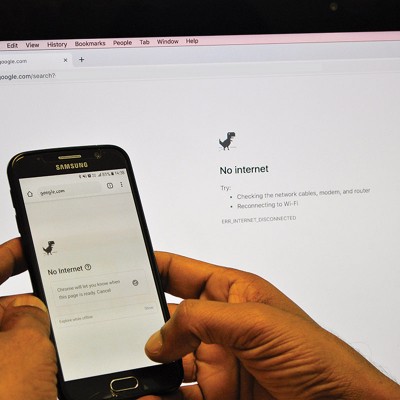Introduction
This article is an attempt to contextualise Zimbabwe’s complex history of political violence and conflict while providing an analysis of reconciliation, peacebuilding and nation-building attempts since 1980. The article contends that prospects for successful peacebuilding and post-conflict reconstruction in any society hinge on the development of a specific set of skills to attend to the various challenges and opportunities presented by conflict and violence. In Zimbabwe, the National Peace and Reconciliation Commission (NPRC) represents a first major attempt in this regard. The NPRC is an attempt to resolve past violent conflicts while building local capacities to guarantee a peaceful and harmonious future for all. In Zimbabwe, while conflicts today find expression in different interconnected layers, ranging from a household level (domestic violence) to broader social-level land conflicts, the majority of conflicts remain deeply rooted in disputes over national power (politics) and socio-economic hardships. In attempting to provide analyses of the crises in Zimbabwe, this author remains aware that the crises are complex and multidimensional. Because of this limitation, this article only explores issues that have a bearing on the healing, reconciliation and nation-building process in Zimbabwe.
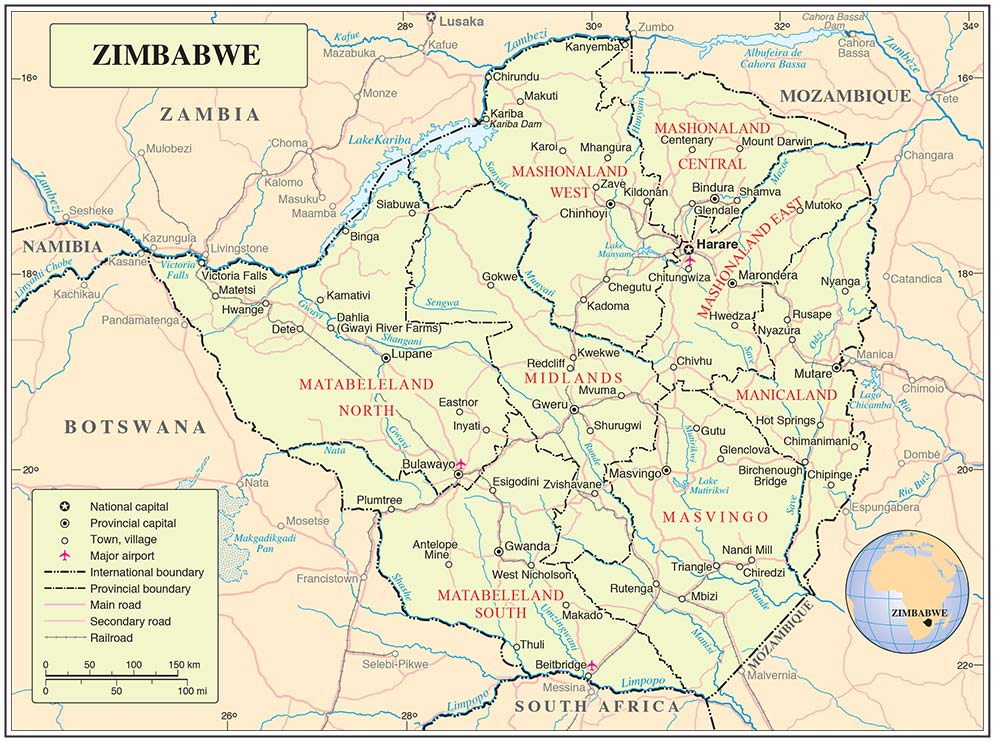
Insights into Violence and Conflict in Zimbabwe
The history of present-day Zimbabwe has been characterised by recurring cycles of violence and human rights abuses, often on a very large scale. These include the liberation struggle against white minority rule, the Gukurahundi genocide1 of the 1980s, the chaotic and violent land redistribution programme, the violent and insensitive “urban clean-up” campaign of 2005 (Operation Murambatsvina), and large displacements associated with electoral violence in 2000, 2002 and 2008. As a result of these recurring episodes of violence and conflict in Zimbabwe, it is likely that almost everyone knows someone who is either a victim, survivor, perpetrator or enabler of this brutal legacy of violence and impunity. To understand this informal economy of violence, this author reflects on the work of notable historians and academics, among them Ndlovu-Gatsheni2 – a celebrated historian and authority on contemporary Zimbabwean history.
Ndlovu-Gatsheni argues3 that violence forms a significant component of Zimbabwe’s past and contemporary history. He contends that Zimbabwe’s transition from a colony to a sovereign nation and from a promising post-independent state into unprecedented crisis and chaos post-2000 is largely the result of violence, its memory and impunity. He locates what he calls a “culture of violence” within three undemocratic episodes and historical processes that produced Zimbabwe. First was the country’s patriarchal and often violent pre-colonial history (pre-1890), where political cultures and practices were influenced and permeated by ideologies of heredity and kinship rather than modern-day competitive politics. Second was a violent colonial project (1890–1980), which imposed an undemocratic system based on white supremacy, patriarchy and violent authoritarianism. This system of governance was racist and patriarchal, as it excluded blacks and women from participating in the country’s political processes. It also discriminated against minority groups. Third was the rise of African nationalism (approximately 1960–1979), which inspired violent and armed military resistance across southern Africa. Ndlovu-Gatsheni argues4 that like its predecessor, this period was characterised by authoritarianism, commandism and the suppression of dissent that privileged violent problem-solving over dialogue and national consensus.
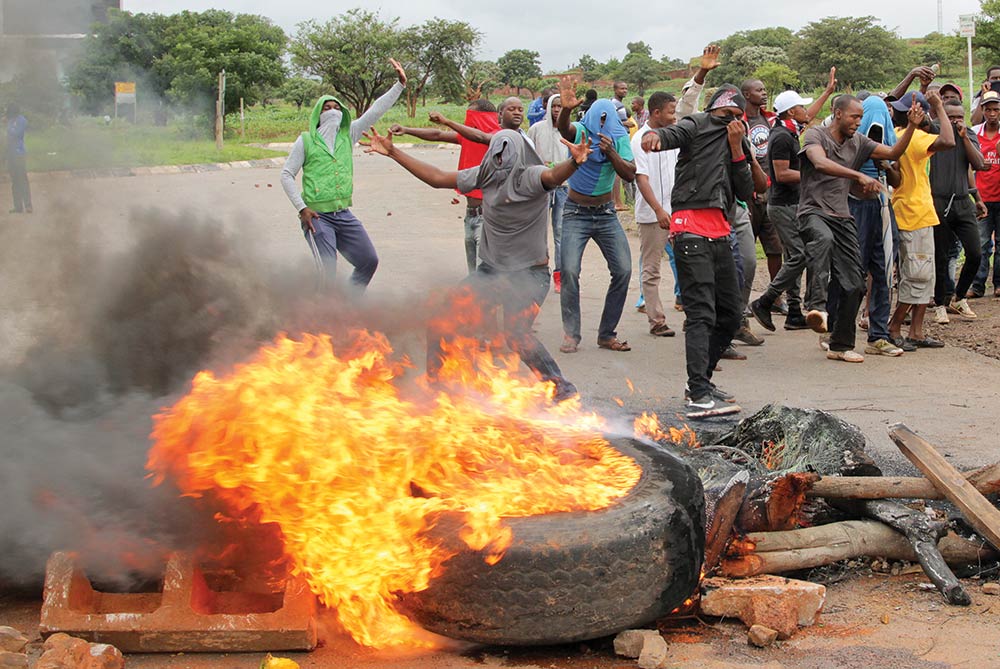
Machakanja5 notes that since the violent invasion of precolonial kingdoms by Cecil John Rhodes’ British South African Company (BSAC) in the late 19th century and the subsequent colonisation of southern Rhodesia by Britain, the history of Zimbabwe has remained steeped in violent and intractable conflict. Benyera6 goes further to describe Zimbabwe as a “chronically violent state” before colonialism, during colonialism and after independence. The author adds that Zimbabwe has routinely experienced brief spells of progress and then longer and often intractable cycles of challenges that could easily be interpreted as its dominant narrative. For example, the independence euphoria in 1980 was interrupted by large-scale political violence and politicide in Matabeleland and parts of the Midlands – the Gukurahundi genocide, which lasted five years (1982–1987) and which eventually ended with the signing of the Unity Accord in 1987. Since the formation of the country’s first mass political opposition, the Movement for Democratic Change (MDC), in September 1999, Zimbabwe has remained trapped in constant and perpetual cycles of conflict and violence, exacerbated by disputed and inconclusive electoral contests.
Because violent problem-solving has often been utilised and privileged as a method for addressing political and social differences since colonial times, Zimbabwe today remains a fractured and broken society. Social trust has been eroded, leaving communities divided, while society itself has become dysfunctional. Torture, harassment, threats and intimidation of dissenting voices have become familiar weapons of choice deployed by successive administrations to quell dissent and the opposition.7 While these undemocratic measures have ensured that incumbent administrations retained power at all costs, over time the social costs have far outweighed the political gains. This has not been helped by the fact that until quite recently – with the establishment of the Organ for National Healing, Reconciliation and Integration (ONHRI) – the NPRC’s prospects of achieving sustainable peace and stability in Zimbabwe remained an elusive challenge.
Scholars like Ndlovu-Gatsheni8 and Chiweshe9 argue that this was partly due to the lack of comprehensive and holistic healing and reconciliation approaches that should have looked into issues of past human rights violations, violence and conflict to facilitate truth-telling, national healing and reconciliation as important building blocks for nation-building. Today, the majority of conflicts and disagreements remain deeply rooted in disputes over national power (politics) and socio-economic hardships. This is, in part, because colonial and post-colonial struggles for access to, and control and management of, political power entrenched a culture of political intolerance, violence and violent problem-solving. Sachikonye argues10 that since independence, the ruling party – the Zimbabwe African National Union – Patriotic Front (ZANU-PF) – has deployed muscular methods of contesting power, including the active deployment of violence, intimidation and the harassment of opposition members and activists. The cumulative events of the past century have raised concerns about the country’s dire need for political and social transformation.
Attempts at Healing and Reconciliation Since 1980
Zimbabwe’s attempts at national healing and reconciliation can be categorised into three distinct phases: the transitional period leading to independence in 1980; the Unity Accord of 1987; and the post-2008 period, following an inconclusive vote pitting former president Robert Mugabe and Morgan Tsvangirai – Zimbabwean prime minister from 2009 to 2013, president of the Movement for Democratic Change – Tsvangirai (MDC-T) and a key opposition figure to Mugabe. The common thread across all these peace attempts is that they failed to establish the necessary pre-conditions for social cohesion, national healing and reconciliation.

Zimbabwe’s first attempt at reconciling and healing a deeply divided and hurting society was through a national reconciliation policy announced by Mugabe immediately after the attainment of political independence in 1980, in his capacity as the country’s first black prime minister. The policy involved the formation of a Government of National Unity (GNU) comprising liberation struggle rivalries – the Patriotic Front (PF) on one hand, and Ian Smith’s Rhodesian Front (RF) on the other. A new national army, christened the Zimbabwe National Army (ZNA), was born out of this arrangement. However, the shortcomings of this elite arrangement later plunged Zimbabwe into deep politico-ethnic strife that engulfed large parts of south-western Zimbabwe, where over 20 000 supporters of the Patriotic Front – Zimbabwe African People’s Union (PF-ZAPU)11 and innocent civilians were massacred by Mugabe’s Gukurahundi forces between 1982 and 1987.
The second attempt at reconciliation was the signing of the Unity Accord between ZANU-PF and PF-ZAPU in December 1987, following the Gukurahundi ethnic cleansing in predominantly Ndebele-speaking communities. The genocide was perpetrated by Mugabe’s Fifth Brigade, resulting in thousands of deaths, multiple cases of human rights abuse and large-scale population displacement. No concerted efforts were made to seek justice for the thousands of people whose lives and livelihoods were destroyed as a result of the violence. Instead, perpetrators were granted amnesty by Mugabe, in the process trivialising the suffering of victims and survivors. Mugabe would later describe the political killings as constituting a “moment of madness”.
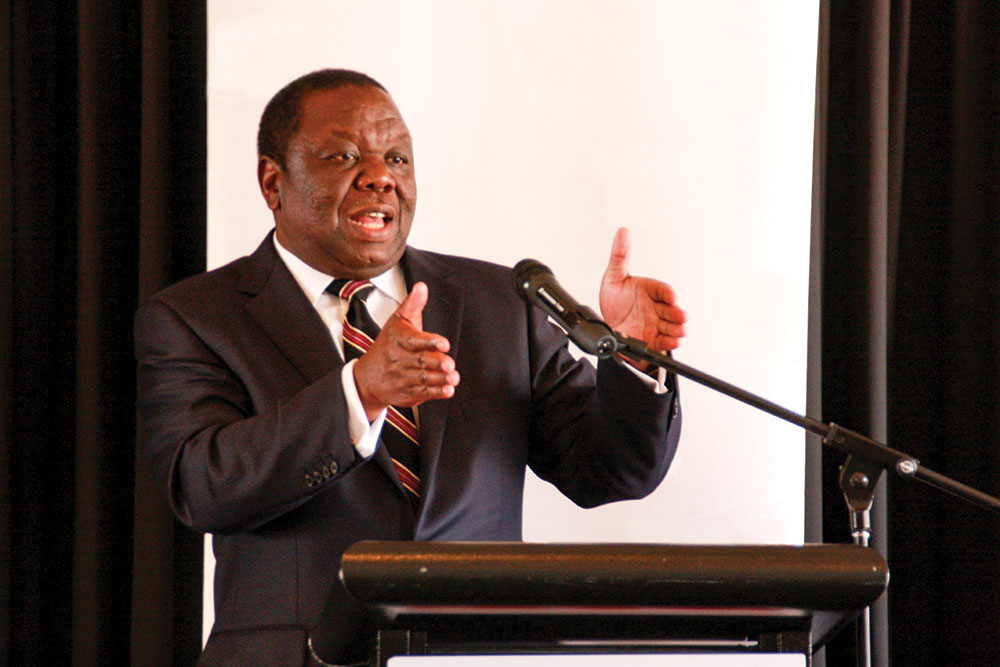
The third and last attempt at reconciliation and nation-building followed the violent and inconclusive presidential run-off election in June 2008. The fierce nature of the election and the violence unleashed on his supporters forced opposition leader Tsvangirai to pull out of the electoral contest. International condemnation forced Mugabe to reconcile with Tsvangirai through a mediation process facilitated by the Southern African Development Community (SADC), with the support of the African Union (AU). Following lengthy negotiations, in September 2008, the three political parties represented in Zimbabwe’s parliament signed a Global Political Agreement (GPA), which provided for the formation of Zimbabwe’s third GNU since independence. Both SADC and the AU became guarantors of this agreement. The GNU lasted five years – between February 2009 and July 2013 – and came to an end following yet another disputed vote, in which the opposition MDC-T lost to ZANU-PF. Mugabe won by over 60%.
At present, the country is battling a devastating economic and political crisis, since a widely disputed election in July 2018 that pitted ZANU-PF’s Emmerson Mnangagwa against Nelson Chamisa – leader of the opposition (MDC-A) – and which was won by Mnangagwa. Some civilians were gunned down by the military in Harare a day after the election. The political stalemate that followed the election saw civil society leaders – particularly the church, under the Zimbabwe Council of Churches (ZCC) – make numerous overtures to bring the main disputants to dialogue, with the view of stopping a potentially catastrophic situation. Disappointingly, these pre-emptive and preventive efforts have not yielded tangible results as yet. The NPRC also attempted to initiate its own national dialogue, but the process was abruptly abandoned when Mnangagwa’s government initiated its own negotiating platform – the Political Actors Dialogue (POLAD) – and appointed the NPRC chairperson, retired Justice Selo Nare, to oversee POLAD processes. This move riled opposition parties, the MDC-A included, which argued that Mnangagwa lacked the legitimacy to convene and mediate any national dialogue process. The MDC and other pro-democracy parties have been resolute in their desire to have the mediation process led by neutral and credible mediators. Consequently, the process has stalled – and with disagreements over the content and nature of dialogue, including who should convene it, political polarisation remains on a rise and threatens prospects for economic revival and political normalcy. With no political solution in sight, the majority of Zimbabweans face a grim future.

Peacebuilding Prospects in Zimbabwe: An Achievable Goal?
As has been alluded to previously, nation-building and peacebuilding attempts have faced substantial challenges since 1980. However, the signing of the NPRC Bill into law by Mnangagwa on 5 January 2018 created optimism. In 2018 alone, the NPRC conducted community outreach in the country’s 10 provinces, and also implemented a range of peace campaigns in the period leading to the “harmonised elections”12 in July 2018. Consequently, the campaign period in 2018 was one of the most peaceful in decades. With technical and financial support from the United Nations Development Programme (UNDP), the NPRC instituted a number of peacebuilding programmes and campaigns across the country. In 2018, the NPRC also partnered with local universities to institutionalise its work through a specialised internship programme, specifically designed for students pursuing studies in peace and conflict. This programme was designed to strengthen the nexus between policy, practice and theory. This is crucial, given that prospects for successful peacebuilding and post-conflict reconstruction in any context hinge on the development of a set of skills to attend to the various challenges and opportunities presented by conflict. According to the National Transition Justice Working Group of Zimbabwe (NTJWZ)13 the NPRC’s functions, as spelt out in Section 525 of the Zimbabwean Constitution, are as follows:
- ensure post-conflict justice, healing and reconciliation;
- develop and implement programmes to provide natural healing, unity and cohesion and the peaceful restoration and resolution of disputes;
- encourage people to tell the truth about the past and facilitate the making of amends and the provision of justice;
- develop procedures and institutions to facilitate dialogue between political parties, communities and other groups; and finally
- take appropriate action on complaints received from the public.

Unlike the Truth and Reconciliation Commission (TRC) in South Africa, the NPRC does not investigate past human rights violations. This approach has its own merits and disadvantages (as addressed in a separate article14). However, what remains problematic is the NPRC’s gender programming bias, which is curious given that women and girls often disproportionately bear the brunt of violence and conflict, be it at household or community level. For example, Shaba15 notes that women were disproportionately affected in the violence leading to the June 2008 presidential run-off. Equally important were the harrowing testimonies by a group of women about the Gukurahundi atrocities during one of the NPRC’s outreach meetings in rural Kezi, Matabeleland South.16 The testimonies attested to the different impact the genocide had on women and men, boys and girls. In spite of this, the NPRC has failed to provide a gendered analysis of conflict, violence and past human rights violations in Zimbabwe. A gendered analysis would have spelt out how women and men, boys and girls, and sexual minorities experienced violence and conflict. This is crucial because the intersection of these different identity factors can subsequently affect an individual’s agency and power, with various factors augmenting vulnerabilities. It is equally important given the role women play as community-builders and protectors – although oftentimes their efforts are simply neglected in mainstream peacebuilding discourses. It is also precisely because of their identity as cultural custodians and community-builders that women and girls are often targeted in ways directly linked to their gender and sexuality. In Zimbabwe, sexual violence became a means of undermining the strength of the opposition, and to annihilate communities opposed to ZANU-PF.17 Given this context, it is prudent for the NPRC to engage such issues, taking care to analyse the gendered impact of conflict and violence on both victims and perpetrators.
Without revisiting some of its programming flaws, it is difficult to imagine how the NPRC could challenge the patriarchal status quo, which often promotes hyper-masculinities that perpetuate the abuse of women in conflict situations. To Hodzi,18 the approach adopted by ONHRI – and, after it, the NPRC – demonstrates a deep-seated masculinisation of Zimbabwean politics and justice. However, much can still be done to improve the programming of the NPRC. For example, the NPRC can create gender-neutral spaces for victims who indicate their willingness to testify about sexual violence, rape or other forms of violence that they encountered during conflict, which cannot ordinarily be spoken about in public gatherings. This is important given the justice system’s history of trivialising sexual violence.
The three major defining moments in the country’s history – the Lancaster House Agreement (1979), the Unity Accord (1987) and, more recently, the GPA (2008) – were largely shaped by men embedded in patriarchal structures, with men assuming most positions of authority and women’s contributions receiving limited to no attention.19 Due to their exclusivity, these peace attempts failed to build lasting peace. Research demonstrates that peace negotiations are more likely to be successful if they are inclusive. Strengthening the role of women in peacebuilding and reducing the impact of violence and conflict on the lives of women and girls requires a nuanced and comprehensive understanding of gender norms, gender identities and the gendered experiences of both conflict and peace.
As pointed out earlier, the NPRC aims to build a united and cohesive society in which citizens are free to participate in the governance and development of Zimbabwe. If this is the broader aim, how then does the NPRC seek to evaluate its successes against its shortcomings so far? Will the NPRC, like the National Unity and Reconciliation Commission (NURC) in Rwanda, develop a mechanism to take stock of its work to date? Rwanda’s Reconciliation Barometer (RRB) has helped NURC to identify existing gaps that require urgent attention. For example, the RRB found that genocide ideology and ethnic stereotypes remain a challenge for unity and reconciliation.20 A similar tool may benefit the NPRC’s work, particularly given the high level of mistrust between the state and the general populace – trust is an important currency for true healing and genuine reconciliation. It may also be used to assess the contribution and involvement of women and minority groups in the peacebuilding process.
Conclusion
It is clear that healing is not just about the past, but about how the past can affect both the present and the future. It is also clear that mechanisms used historically as vehicles for justice and reconciliation – such as amnesties and pardons, clemencies and commissions of inquiry – have failed to resolve Zimbabwe’s complex history of conflict and violence. What is needed are practical healing programmes based on trust, and a genuine desire to resolve past transgressions as a society. The issues raised in this article are not an attempt to discredit the NPRC, but to help broaden its focus and sharpen its programming. Finally, and most importantly, healing and reconciliation cannot be left to the NPRC alone – everyone has to play their part, dutifully and with sincerity. All Zimbabweans must resolve to bequeath to future generations a peaceful, violent-free and prosperous society.
Endnotes
- Gukurahundi (“rains that wash the chaff before the early spring rains”) is a Shona name given to the massacres that occurred in Matabeleland and parts of Midlands provinces between 1982 and 1987. In 2010, Genocide Watch classified the massacres as a genocide, putting to rest debates on whether the indiscriminate political killings amounted to genocide or not.
- Ndlovu-Gatsheni, Sabelo (2009) Do ‘Zimbabweans’ Exist? Trajectories of Nationalism, National Identity Formation and Crisis in a Postcolonial State. Oxford: Peter Lang AG International Academic Publishers. See also: Ndlovu-Gatsheni, Sabelo (2011) The Zimbabwean Nation-state Project – A Historical Diagnosis of Identity and Power-based Conflicts in a Postcolonial State. Paper presented at the Nordiska Afrika Institutet, Uppsala, Sweden.
- Ibid.
- Ibid.
- Machakanja, Pamela (2010) National Healing and Reconciliation in Zimbabwe: Challenges and Opportunities. Wynberg: Institute for Justice and Reconciliation, Africa Programme. Zimbabwe Monograph Series 1.
- Benyera, Evaristo (2014) Debating the Efficacy of Transitional Justice Mechanisms: The Case of National Healing in Zimbabwe, 1980-2011. PhD thesis, UNISA.
- Cameron, Hazel (2018) State-organized Starvation: A Weapon of Extreme Mass Violence in Matabeleland South, 1984. Genocide Studies International, 12 (1), pp. 26–47. See also: Doran, Stuart (2017) Kingdom, Power and Glory: Mugabe, ZANU and the Quest for Supremacy 1960-1987. Johannesburg: Sithatha Publications.
- Ndlovu-Gatsheni, Sabelo (2008) Nationbuilding in Zimbabwe and the Challenges of Ndebele Particularism. African Journal on Conflict Resolution, 8 (3), pp. 27–55.
- Chiweshe, Manashe Kudzai (2016) Efficacy of Top-down Approaches to Post-conflict Social Coexistence and Community Building: Experiences from Zimbabwe. African Journal on Conflict Resolution, 16 (2), pp. 11–33.
- Sachikonye, Lloyd (2011) Curse of Political Violence: Time to Break the Cycle of Terror. Johannesbug: Open Society Initiative for Southern Africa (OSISA).
- Catholic Commission for Justice and Peace/Legal Resources Foundation (1997) ‘Report on the 1980s Disturbances in Matabeleland and the Midlands’, Available at: <http://www.rhodesia.nl/Matabeleland Report.pdf> [Accessed 13 December 2019].
- Since the creation of the Zimbabwe Electoral Commission (ZEC) in 2005, Zimbabwe has held harmonised elections thrice: in 2008, 2013 and 2018. In a harmonised electoral system, votes are cast for presidential candidates, members of parliament (both senate and national assembly) and local councils concurrently.
- The National Transition Justice Working Group of Zimbabwe (2017) A Guide to Understanding the National Peace and Reconciliation Commission in Zimbabwe.
- Tshuma, Darlington (2018) Reconciliation, Integration and Healing Efforts in Zimbabwe. Conflict Trends, 2018 (2), pp. 19–27.
- Shaba, Luta (2011) Dreaming of Equality: Time to Fulfil the GPA Promises to Women. OpenSpace, 1, pp. 154–155.
- Moyo, Thandekile (2018) ‘G-u-k-u-r-a-h-u-n-d-i. We Dare Not Speak its Name’, Mail & Guardian, 5 October, Available at: <https://mg.co.za/article/2018-10-05-00-g-u-k-u-r-a-h-u-n-d-i> [Accessed 2 December 2019].
- Hodzi, Obert (2012) Sexual Violence as a Political Strategy in Zimbabwe: Transitional Justice Blind Spot? Oxford Transitional Justice Research Working Paper Series: Debates.
- Ibid.
- Mbawadzawo, Melody and Ngwazi, Nomfundo (2013) Mediating Peace in Africa: Enhancing the Role of Southern African Women in Mediation. Policy and Practice Brief, ACCORD.
- Alert International (2018) Unity and Reconciliation in Rwanda. A Look at Policy Implications vis-à-vis Social Cohesion. Policy Brief, October.

